If you’re like a lot of bloggers, there’s a good chance you might not have a degree in English or journalism. But that doesn’t mean you can’t learn how to write a blog post that your readers will love – you just need the right process! 😎
When you’re running a WordPress blog, it can be easy to get caught up in the big picture. Of course, developing an overall content strategy and setting up a posting schedule are important. But in the end, your blog’s success is still going to come back to the quality of your individual content pieces.
✒️ Writing any type of content is inherently creative, and we wouldn’t want to dictate every decision you make along the way. At the same time, it helps to have a clear process to follow while putting together each post for your blog. This way, you’re sure not to miss any important steps.
In this guide, we’ll outline the steps we follow when we write a blog post. These four phases can serve as both inspiration and a checklist. They will help you streamline your own content creation process. Let’s get right to work! 🛠️
📚 Table of contents:
- Step 1: Pick a topic that sets you up for success
- Step 2: Create an outline
- Step 3: Write the post
- Step 4: Edit your first draft
- Frequently Asked Questions
Step 1: Pick a topic that sets you up for success 📈
The process of writing a stellar blog post starts long before you set pen to paper (or fingers to keyboard). You won’t get very far if you don’t first take the time to settle on an idea you can write a quality blog post about.
There are two parts to this step.
The first is actually coming up with some potential topics. Some people like to simply sit down and think up an idea out of thin air. However, for a more practical approach, check out our guide to finding blog post ideas.
The second part is a little trickier. If you want to create a high-quality post that’s useful to your readers and helps drive traffic to your blog, you won’t want to write about just anything. Instead, the idea you settle on should meet as many of the following criteria as possible:
- Relevance. Above all, your chosen topic should be both interesting and useful to your target reader. To determine this, you’ll want to have a comprehensive audience profile in place. Then, think about how your post can solve a problem or answer a key question for the audience.
- Uniqueness. Most importantly, you won’t want to duplicate any content already on your blog. In addition, do a little Googling and see how many posts exist on the same topic. You don’t have to write about something completely new, but try to focus on a fresh angle or provide a unique spin that makes your post different.
- Depth. Before you start working on any given topic, make sure you actually have enough to say about it to fill an entire blog post. While shorter content can be useful (and it’s good to vary your post lengths), long-form content tends to provide the best returns.
- Longevity. There is a place for time-sensitive blog posts. However, unless you’re running a news-focused blog, you’ll want to focus on ‘evergreen’ content that’s just as relevant and useful to readers a year from now.
Finally, this is also a perfect opportunity to do a little keyword research:

If you want to attract a lot of readers through search engines, you’re best off opting for a post you can build around a specific keyword. Google Keyword Planner is an excellent tool to start out with. Another good option is KWFinder, though the free plan only lets you look up five keywords per day.
Look for a keyword that’s both high in search volume and relatively low in competition.
Step 2: Create an outline 🖱️
You’ll be forgiven if the word ‘outline’ makes you cringe. Many people have negative associations with the concept. When done poorly, outlining can suck some of the creativity out of the writing process, and take up a lot of your valuable time.
However, when done well, starting out with an outline provides many benefits. For instance, having a framework in place enables you to focus on smaller concerns like word choice and flow while you’re writing, rather than having to figure out what you’re going to write about next.
More importantly, an outline helps ensure you cover all the important points in your post in a logical order. In fact, it helps to think of your outline as an organizational tool. At a minimum, you’ll want to include:
- All the major headings and sub-headings to be included in your post.
- A few bullet points for each section, explaining what ideas and topics it will cover.
- Notes where you’d like to include key images and/or links.
It also helps to do some research during the outlining stage. Even if you’re very familiar with the topic at hand, you’re likely to stumble across new ideas or angles.
Finally, it’s important to remember that your outline is a tool – not a cage.
You’re likely to deviate from it while writing the post, which is fine. You’ll essentially have a road map to refer to when you write a blog post, so you know how any changes you do make are likely to affect the post as a whole.
Step 3: Write the post 📌
We’re going to keep this step short and sweet. As we’ve mentioned, actually sitting down to write a blog post is a creative process, and everyone’s approach will be different.
With this in mind, here are a few tips that work for us when writing a blog post:
- Don’t worry about self-editing while you’re writing the first draft. There’s plenty of time to go back and make fixes later. Just get all your ideas down.
- Aim to write too much, rather than too little. You can always trim down what you’ve written, but trying to lengthen a post after the fact can result in adding too much ‘fluff’.
- Write your post’s introduction and conclusion last. Once the rest of the post is laid out, you’ll have a better idea for how to best open and close it.
It’s also smart to keep in mind more general writing advice, such as how to overcome writer’s block and writing at the time of day when you’re most alert and focused.
Step 4: Edit your first draft ⚙️
This step is where a lot of bloggers stumble – especially first-timers. The biggest mistake you can make is simply to omit this phase altogether. Many people simply write a blog post, give it a quick pass for spelling mistakes, and hit Publish.
However, much of a post’s quality comes through in the editing process. Your first effort is called a rough draft for a reason – polishing lets your ideas, opinions, and advice shine through without distraction. This holds true no matter how much (or how little) experience you have.
We’ve written about the editing process in the past, and we recommend you check out the article for a full checklist. As with the previous step, though, here’s a summary of the most important advice you’ll want to keep in mind:
- Don’t edit right after you’ve finished writing. Allow for time to pass so you can see the post more objectively – ideally a day or so.
- Watch out for the basics. Spelling and grammar may seem simple, but they’re important for establishing your credibility and putting the focus on your content (not your mistakes).
- Edit the entire post, not just the text. This means looking over images and other media, checking your formatting and metadata, and so on.
- Check out your post on the front end. No matter where you’ve actually written your blog post, you’ll want to preview and read it through on the WordPress front end. This lets you catch all sorts of errors you may have otherwise missed.
- Give your post a final proofread. When you’re happy with the post, give it one final read-through to catch any lingering errors, confusing sentences, etc. You can also run it through a grammar checker tool (such as Grammarly) to be extra sure that everything looks good.
You really can’t devote too much time to the editing and polishing process. The result will be a high-quality blog post you’ll be happy to put your name to.
How to write a blog post FAQ 🙋
At this point you should have a solid understanding of how to write a blog post. However, we know that sometimes readers still have a few questions. We also know that some readers will skim an article before they commit to reading it. Whichever camp you fall in, we’ve assembled four questions that we often see asked when people want to know more about how to write blog posts. Here they are, along with their responses:
What should be included in a blog post?
A well-rounded blog post should typically include the following elements:
- Attention-Grabbing Title: Create a catchy and compelling title to entice readers to click and read your post.
- Introduction: When you write a blog post, it’s important to start with a concise and engaging introduction that hooks the reader and provides an overview of the topic.
- Well-Structured Body: Organize your content into logical paragraphs or sections, making it easy for readers to follow. Use subheadings, bullet points, and numbered lists for clarity.
- Relevant and Valuable Content: Provide informative, unique, and actionable information that addresses the needs or interests of your target audience.
- Visuals: Incorporate relevant images, infographics, or videos to enhance the visual appeal and engagement of your blog post.
- Internal and External Links: Include links to relevant resources within your own blog (internal links) and external sources (external links) to support your points and provide additional value to readers.
- Call-to-Action (CTA): Encourage readers to take a specific action at the end of the post, such as subscribing, leaving a comment, or sharing the content on social media.
- Conclusion: Summarize your main points, reiterate key takeaways, and provide a closing thought or call-to-action.
- Author Bio and Social Sharing Buttons: Include a brief author bio with links to your social media profiles, and make it easy for readers to share your post on social platforms.
Be aware that the length and specific elements of a blog post can vary depending on the topic, style, and purpose. Adapt these guidelines to fit your blog’s niche and audience.
What not to post on a blog?
While the content you choose to publish on your blog depends on your niche and target audience, there are a few general types of content that are typically best avoided:
- Offensive or Discriminatory Content: When you write a blog post, avoid including content that promotes hate speech, discrimination, or offensive language targeting individuals or groups based on their race, ethnicity, religion, gender, or any other characteristic.
- Misleading or Inaccurate Information: Ensure that the information you provide is accurate, fact-checked, and from reliable sources. Misleading or false information can harm your credibility and negatively impact your readers’ trust.
- Plagiarized or Stolen Content: Always create original content or properly attribute and cite any external sources you reference. Plagiarism or using someone else’s content without permission can damage your reputation and potentially lead to legal issues.
- Personal Rants or Negative Remarks: Avoid using your blog as a platform for personal rants, venting, or negativity. Instead, focus on providing helpful and positive content that benefits your readers.
- Irrelevant or Uninteresting Content: Stay focused on your blog’s niche and provide content that aligns with your audience’s interests. Avoid posting content that is irrelevant or uninteresting to your readers.
- Excessive Self-Promotion: While it’s important to showcase your expertise, avoid excessively self-promotional posts that only serve your own interests. Maintain a balance between providing valuable content and promoting your products or services.
- Overly Lengthy or Dense Posts: While in-depth content can be valuable, excessively long or dense posts without proper formatting and visual breaks can be overwhelming for readers. Keep your posts concise, well-structured, and easy to read.
Keep in mind that maintaining a respectful and professional tone throughout your blog posts is crucial. By avoiding these types of content, you can cultivate a positive and engaging environment for your readers.
What do you put at the bottom of a blog?
When you write a blog post, you can include a few key elements at the bottom to enhance the overall reader experience and encourage further engagement. These include a call-to-action (CTA), related posts, author bio, social sharing buttons, a comments section, related external links, and copyright or legal information.
Remember that the specific elements you include at the bottom of your blog post may vary depending on your blog’s design, goals, and target audience. You should think of the aforementioned elements as an à la carte menu to choose from, not necessarily as an all-inclusive buffet with all of them included.
Do blog posts need pictures?
While it’s not an absolute requirement, including pictures in blog posts can greatly enhance the reader experience and engagement. Visual elements like images, infographics, or videos can capture your readers’ attention and encourage them to stay on your page.
They also break up text and make the content more scannable, helping your readers navigate through any given post more easily.
In addition, some images and infographics can visually represent concepts, data, or step-by-step instructions, making complex information easier to comprehend. This can also increase the likelihood that your blog post – or at least the infographic from it – will be shared on social media, expanding your reach and driving more traffic back to your blog.
When choosing images, ensure they are high-quality, relevant to your content, and properly credited if necessary. Additionally, consider optimizing the image size and format with a plugin like Optimole to ensure fast page loading times. However, be mindful not to overload your blog post with excessive visuals, as it can distract from the written content. When you write a blog post, strike a balance between text and visuals to create an engaging and visually appealing finished product.
That’s how to write a blog post that people want to read 🧑💻
If you’re looking to build a thriving WordPress blog, there are a lot of strategies you can employ. You can use Search Engine Optimization (SEO) to drive more traffic to your site, and even take advantage of useful external tools. Along the way, however, you can’t afford to ignore the importance of the writing process itself.
💡 When it comes time to writing a blog post for your site, you’ll want to make sure you cover these vital steps:
- Come up with a viable idea. Choose one that suits your audience and lets you craft a unique piece of content that adds value to the topic.
- Create an outline that provides an overall structure for your post, without constraining your creativity.
- Write the post. Get the first draft down while everything is still fresh in your thoughts.
- Edit your first draft, keeping an eye on small- and large-scale considerations alike.
As a final word of advice, once your blog is up and running for a while, you’ll also want to ensure that your previously published content stays up to date. Read our guide on addressing content decay for some guidance on that.
Best of luck on your blogging journey!
Do you have any other tips for how to write a blog post? Your thoughts are welcome in the comments section below!





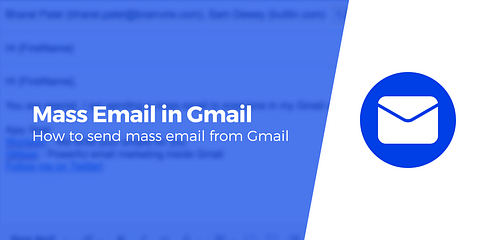


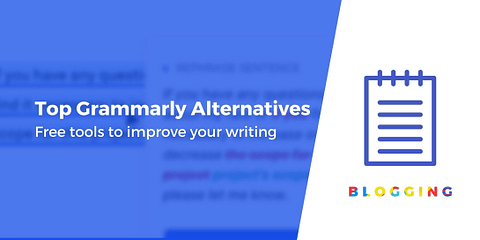
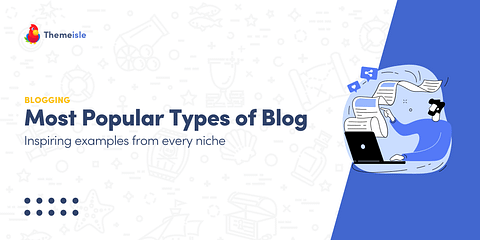

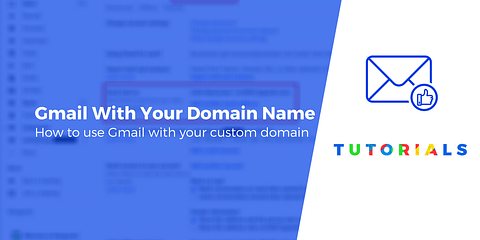



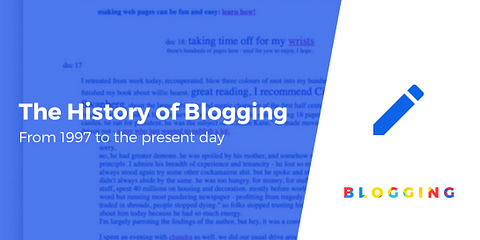

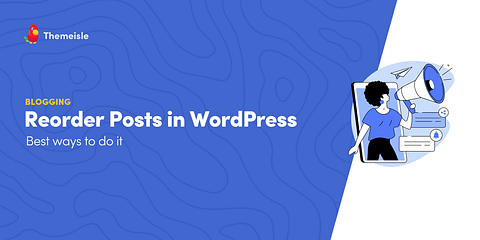


Or start the conversation in our Facebook group for WordPress professionals. Find answers, share tips, and get help from other WordPress experts. Join now (it’s free)!